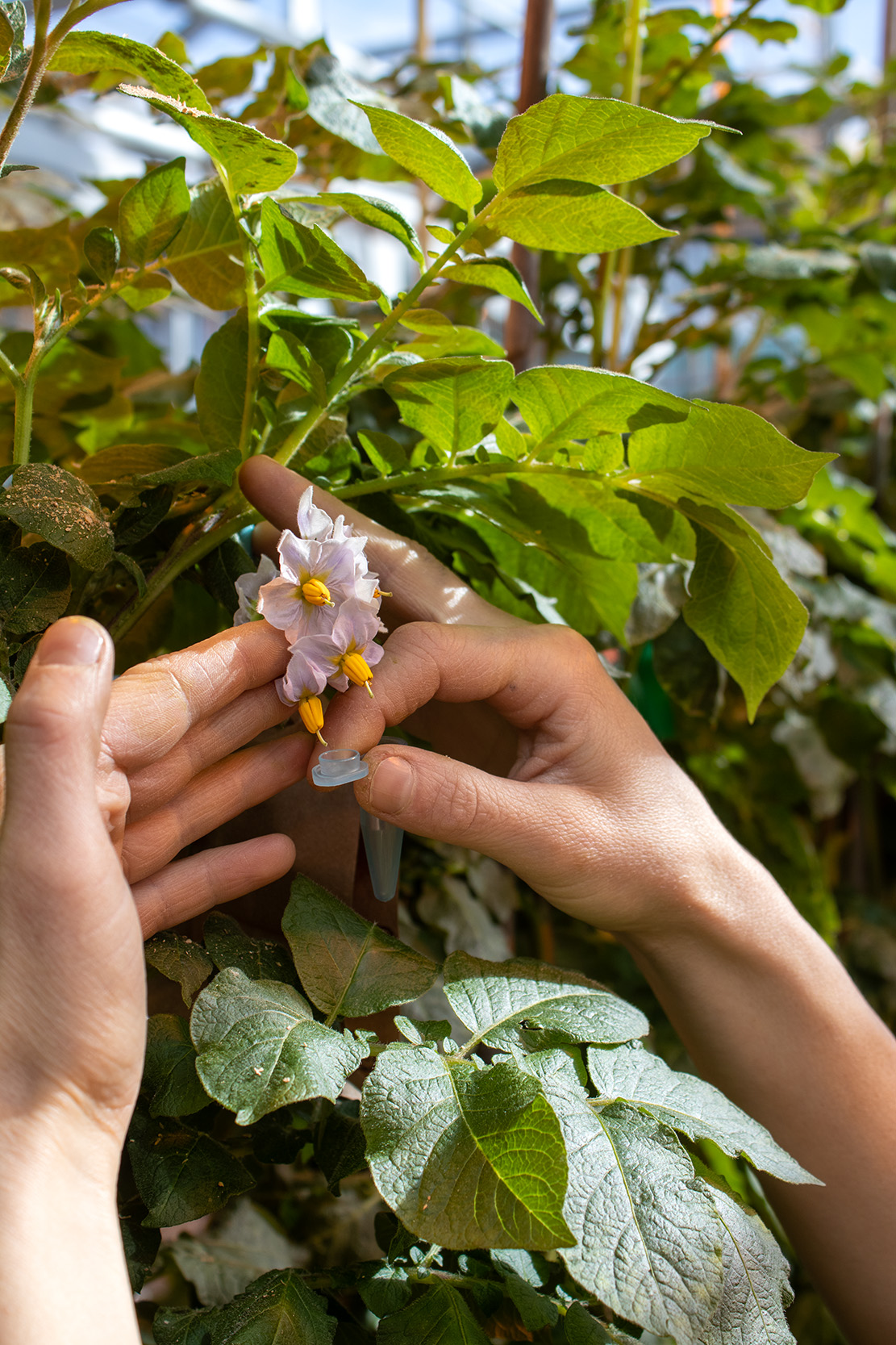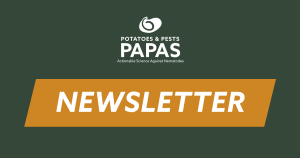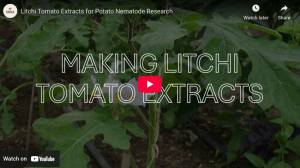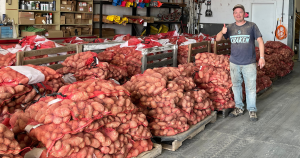Selecting for Success: What’s the Buzz about Potato Pollinations?
When we talk about pollinations, buzzing bees are often the focus. However, at Cornell University and other potato breeding programs across the country, a different buzzing tool is used – an electric toothbrush. But why?

The pollen on a potato flower clings inside the anthers which makes it difficult to collect for use in crosses. To loosen the pollen, an electric toothbrush is carefully placed on the flower to vibrate the pollen out of the anthers and into a collection tube. This is done with all clones intended to be used as male parents.
Once the flowers open on plants intended to be used as female parents, pollinations can begin. Pollen is shaken into the cap of the collection tube and then the stigma of each flower in a cluster is gently dipped into the pollen. The flower cluster is labeled with an appropriate tag to record the parents of that cross.
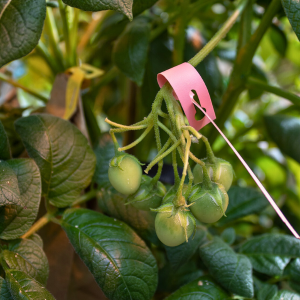
Successful pollinations result in berries that look like small green tomatoes. These berries have a tendency to drop off the plant, which is problematic because then the parents are no longer known. To prevent the loss of valuable crosses, paper bags are placed over each pollinated cluster to catch any falling berries. Four to six weeks after pollination mature berries are harvested and their seeds subsequently extracted. Packets of seeds are labeled with their cross ID code (e.g. B1, B2, B3, etc.) and placed into storage, to allow their natural dormancy to break, before they are sown to produce plantlets the following growing season.
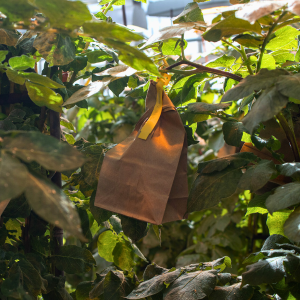
In 2023, the Cornell breeding program made several crosses with the specific goal of developing potato varieties resistant to the pale potato cyst nematode (Globodera pallida). One of the sources of resistance used in crossing that year came from the cultivar Innovator. It has high levels of resistance to G. pallida because it has a resistance gene known as GpaV. Innovator has been widely used in crossing elsewhere and is already a parent of over 25 named varieties.

By using this cultivar in crosses, the program hopes to create new potato clones that not only have resistance to nematodes but also exhibit favorable agronomic traits.
Article and Photos by Pia Spychalla

